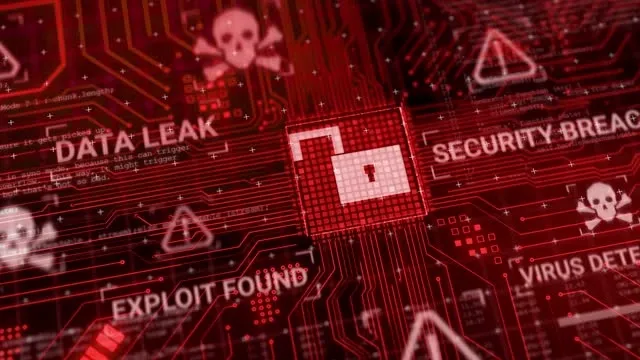The Snowflake breach has shocked enterprises.
Concerns are skyrocketing as cybercriminals access customer accounts using stolen credentials.
The breach has been linked to attacks on Ticketmaster and Santander, both experiencing unauthorized data access hosted by third-party providers.
Uncertainty shrouds the breach.
Scope of the Breach
Although initially reporting a “limited number” of affected accounts, Snowflake’s breach appears more extensive than first revealed.
More companies are discovering unauthorized access to their Snowflake environments, with cybercriminals exploiting login credentials stolen through infostealer malware, causing widespread concerns.
The tool “rapeflake” and infostealers dramatically underscore vulnerabilities in the interconnected cybersecurity ecosystem.
Impacted Companies
Multiple companies have been impacted by the Snowflake breach, including prominent names such as Ticketmaster and Santander.
Nearly 600 million records from Ticketmaster and Santander were linked to the breach.
Advanced Auto Parts and LendingTree, notable firms in their respective industries, have also been implicated. Emails sent to sample addresses confirmed the legitimacy of some compromised accounts.
Snowflake customers should urgently implement multifactor authentication and reset their login credentials to mitigate further risks and enhance account security.
Nature of Stolen Data
The nature of the stolen data from the Snowflake breach is alarmingly diverse. Stolen credentials, customer details, and various sensitive data types highlight the breach’s extensive impact.
Emails, usernames, and passwords form the bulk of the compromised information. Credit card details and transaction histories were also reportedly accessed.
Snowflake’s infostealer issue poses significant risks for businesses. It grants unauthorized access to valuable customer information, personal identification data, and corporate intelligence.
This incident illustrates the critical need for comprehensive security measures. Organizations should seriously evaluate and bolster their cybersecurity infrastructure to prevent data breaches and safeguard sensitive information. Enforcing multifactor authentication, regularly updating security protocols, and educating employees about cyber threats are essential preventative actions.
Methods of Attack
The Snowflake breach exemplifies sophisticated cyberattack methods, primarily driven by infostealer malware. This malware harvests login details, cookies, files, and other sensitive information from compromised devices, enabling unauthorized access to accounts.
Attackers have employed tools to exploit single-factor authentication vulnerabilities. These methods underscore the importance of implementing stronger security measures like multifactor authentication.
Infostealer Malware
Infostealer malware represents an insidious threat in the landscape of cybercrime.
Since 2016, cybercriminals have increasingly turned to this type of malware to augment their illicit activities. Infostealers extract login credentials, banking information, and other private data from infected devices, proving invaluable to hackers.
Their efficacy lies in their ability to infiltrate systems discretely and gather large volumes of data. The malware’s design allows swift duplication or modification, making it highly adaptable and thus more dangerous.
Infostealer malware operates covertly, often hidden within seemingly benign downloads or phishing emails. Once installed, it begins to siphon off critical information, which is then sold or exploited to breach systems further.
The growing reliance on remote work has only amplified this threat. Companies must remain vigilant, employing robust cybersecurity measures and continuously updating their defenses.
Single-Factor Authentication Vulnerability
Single-factor authentication has shown significant weaknesses.
Cybercriminals have leveraged this vulnerability to gain unauthorized access. By simply obtaining or stealing a user’s login credentials, these malicious actors can compromise accounts that rely solely on single-factor authentication. Consequently, sensitive data and systems are left exposed to potential breaches and unauthorized access, leading to substantial security risks.
Modern cyber threats exploit these deficiencies.
Organizations must prioritize transitioning towards multifactor authentication (MFA) to mitigate these risks. MFA adds layers of security, requiring not just a password but also another form of verification, such as a fingerprint or a one-time code.
In the wake of the Snowflake breach, emphasizing MFA has become more critical than ever. Deploying MFA can effectively thwart attempts by cybercriminals who possess stolen credentials, significantly bolstering the security posture against an evolving landscape of cyber threats.
Response and Mitigation
Snowflake, alongside cybersecurity firms CrowdStrike and Mandiant, spearheaded swift investigations into the incidents.
Their proactive measures included comprehensive audits and vulnerability assessments to identify the root causes and to mitigate further risks from infostealer malware, while urging enhanced security protocols.
Their call for multifactor authentication and targeted security measures stands as a testament to their commitment to customer data protection.
Snowflake’s Actions
Snowflake acted swiftly to address the attempted breach.
Realizing the magnitude of the threat, the company immediately partnered with leading cybersecurity experts from CrowdStrike and Mandiant. Through this collaboration, they conducted a thorough audit and analysis of their systems to identify vulnerabilities and potential points of entry exploited by cybercriminals.
To ensure comprehensive security, Snowflake developed a multi-faceted response plan. This included not only technical assessments and fixes but also an emphasis on educating their customer base about best practices in cybersecurity. They issued strong recommendations for adopting multifactor authentication (MFA) across all accounts.
Additionally, Snowflake has emphasized the importance of restricting access to their platform through controlled IP addresses and sophisticated network filters. By focusing on these proactive measures, they aim to create a more resilient ecosystem that can better withstand future cyber threats.
Snowflake’s commitment to transparency and customer safety remains unwavering.
Recommended Security Measures
To protect sensitive data, Snowflake recommends implementing robust security protocols across all accounts.
Enable Multifactor Authentication (MFA) to reduce the risk of unauthorized access.
Restrict IP Access to ensure only authorized users can connect to the system.
Regularly Update Passwords and ensure they are complex and unique.
Monitor Account Activity for any signs of suspicious behavior.
Educate Employees about phishing and other cyber threats.
These measures significantly mitigate the risk of unauthorized data breaches.
Adopting strong security practices can safeguard your organization against potential cyber threats.
Broader Implications
The Snowflake breach underscores a growing need for vigilant cybersecurity measures and the interdependence of digital platforms. This incident serves as a stark reminder that companies must be proactive in protecting not just their own data, but also that of their clients and partners.
In consequence, reinforcing security has become a collaborative effort, involving all stakeholders in the digital ecosystem. Moreover, the breach illustrates the vast ripple effect a single vulnerability can have, pushing companies to reevaluate their overall cybersecurity strategies. It also highlights the importance of transparency and swift action when addressing such incidents.
Third-Party Risks
In an increasingly interconnected world, third-party risks present significant challenges for organizations relying on external vendors for critical services.
These risks amplify the potential vulnerability across all linked systems.
Often, cybercriminals exploit weaknesses in third-party software to infiltrate primary targets.
Organizations must assess the security posture of their vendors with stringent scrutiny.
Conducting thorough audits and requiring compliance with industry standards are paramount steps towards mitigating these risks.
Ultimately, the proactive management of third-party relationships can significantly bolster a company’s cybersecurity defenses.
Rise of Infostealer Malware
Infostealer malware has emerged as a prominent threat, compromising valuable data, often unbeknownst to the victims until extensive damage occurs.
The surge is attributed mainly to the ease of development and high demand.
Cybercriminals opt for infostealers due to their profitability and simplicity to deploy.
These malicious programs infiltrate systems to extract sensitive information like login credentials and financial details.
Once obtained, this data is typically sold on dark web forums or used in further cyber-attacks, exacerbating the ramifications for victims significantly.
Ultimately, the rise of infostealer malware underscores the ever-evolving landscape of cyber threats, necessitating vigilant, advanced security measures.
What to Expect Going Forward
As the investigation into the Snowflake breach continues, cybersecurity professionals and affected companies should brace for several potential developments:
Increased Cybersecurity Measures
In response to the breach, Snowflake and its customers are likely to implement more stringent security protocols. Expect a widespread adoption of multifactor authentication (MFA) and enhanced monitoring of account activities. Companies may also conduct comprehensive security audits to identify and mitigate vulnerabilities.
Ongoing Investigations
Snowflake, alongside cybersecurity firms like CrowdStrike and Mandiant, will continue to investigate the breach. This will involve tracking the origins of the stolen data, identifying the perpetrators, and understanding the full scope of the attack. Regular updates from Snowflake and involved cybersecurity agencies can be anticipated as new information emerges.
Legal and Regulatory Actions
Given the scale of the breach, regulatory bodies such as the US Cybersecurity and Infrastructure Security Agency (CISA) and Australia’s Cyber Security Center are likely to remain involved. Companies affected by the breach may face legal scrutiny and could be required to file breach notifications with the Securities and Exchange Commission (SEC). Legal actions against the perpetrators, if identified, may also follow.
Potential for Further Data Leaks
Cybercriminals may continue to exploit the stolen data, leading to further leaks and unauthorized access to sensitive information. Companies should remain vigilant and monitor for any signs of compromised accounts or data misuse. It is crucial to stay updated on any new claims or data listings on cybercrime forums.
Industry-Wide Implications
The Snowflake breach underscores the interconnected nature of modern digital ecosystems. As companies rely on third-party providers, the security posture of these providers becomes critical. Expect a broader industry push towards improving third-party risk management and ensuring that all partners adhere to robust cybersecurity standards.
Enhanced Awareness and Training
Organizations will likely increase efforts to educate employees about cybersecurity best practices. Training programs focusing on recognizing phishing attempts, securing login credentials, and understanding the importance of MFA will become more prevalent. This heightened awareness can help prevent future breaches and mitigate the impact of any attempted attacks.
By staying informed and proactive, cybersecurity professionals can better navigate the evolving landscape and protect their organizations from similar incidents in the future.

